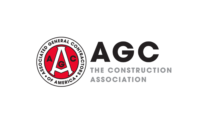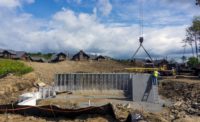On Oct. 24, the experts at Zonda, the housing industry’s foremost advisors, released the New Home Market Update report for September 2022. The housing market has entered a wait-and-see phase—consumers are trying to decide if it makes sense to buy today or wait. As a result, many potential shoppers have moved to the sidelines. This is captured in total sales activity. Zonda’s New Home Pending Sales Index posted a 25.9 percent decline year-over-year in September, with levels roughly 3 percent below the same month in 2019.
Many builders are also responding to the uncertainty by pausing on new land deals and slowing overall starts. Zonda’s statistics show that 81 percent of builders intend to slow starts for the rest of this year, if they haven’t already. Nearly 89 percent of builders are planning to slow starts next year as well.
“We are on a quest to find what we’ll call the strike price – a price where consumers see the value in the home and/or community and re-enter the market,” said Ali Wolf, Zonda’s chief economist. “Right now, consumers are both uncomfortable with where prices are and, in many cases, unable to make the math work. Strategic price cuts and incentives are sometimes proving effective at pulling back in some of the skittish consumers. In other cases, the quest carries on.”
The PSI is down double-digits in many markets
The New Home Pending Sales Index, a leading residential real estate indicator based on the number of new home sales contracts signed across the country, came in at 113.2, representing a 25.9 percent decline from the same month last year. The index is currently 35 percent below cycle highs. On a month-over-month basis, seasonally adjusted new home sales increased 5.9 percent.
- Like last month, the PSI was up in just one of Zonda’s select markets year-over-year: Baltimore. Sales in the market were also up month-over-month.
- The metros that performed the worst year-over-year were San Francisco (-64.9 percent); Phoenix (-61.3 percent); and Sacramento, California (-54.1 percent).
- On a monthly basis, Minneapolis, Seattle and Washington, D.C. were the best-performing markets. Minneapolis increased 22.3 percent relative to last month.
Home prices are still up from last year, but the level of appreciation is slowing
National home prices increased year-over-year across entry-level, move-up and high-end homes. Prices rose 12.7 percent for entry-level to $340,369; 10.8 percent for move-up to $529,050; and 8.7 percent for high-end homes to $906,157. High-end price growth increased to a new high.
Supplementing Zonda’s data with a monthly survey they conduct, there were roughly 30 percent of homebuilders across the country that reported lowering prices month-over-month in September.
Incentives are increasingly common in today’s housing market given the slower sales. 53.7 percent of active projects are offering to-be-built incentives, up from last month. The average incentive dollar amount is $10,169, or 2 percent of the list price.
Quick move-in inventory is rapidly increasing
There are currently 13,383 actively selling communities tracked by Zonda, down 8.6 percent from last year. On a month-over-month basis, the national figure slipped 1.4 percent. Total community count is 30.5 percent below the same month in 2019.
- Sacramento (+9.3 percent); Las Vegas (+8.8 percent); and Riverside/San Bernardino, California (+8 percent), grew community count the most year-over-year.
- Relative to last year, the biggest community count declines were in seen Baltimore (-28.7 percent), Atlanta (-23.7 percent) and New York (-21.3 percent).
- Community count in 8 percent of Zonda’s select markets rose month-over-month, 0 percent were flat and 92 percent fell.
National quick move-ins totaled 25,543, up 126.7 percent compared to last year and 6.1 percent higher month-over-month. Total QMIs are 10.4 percent above 2019 levels. QMIs represent homes that can be occupied within 90 days and are important to watch as the market shifts.
- On a metro basis, all of Zonda’s select markets increased QMI count year-over-year.
- The markets posting the biggest gains were Cincinnati (+1,186.7 percent); Tampa, Florida (+929.4 percent); and Raleigh, North Carolina (+483.5 percent). Cincinnati has surpassed 2019 levels of QMIs, but Tampa and Raleigh remain below.
- Salt Lake City; Jacksonville, Florida; and Cincinnati have seen the most growth in QMIs compared to the same time in 2019, up 322.9 percent, 146.1 percent and 87.4 percent, respectively.
Zonda tracks 60 percent of the production new home market across the United States. Given the proprietary database, Zonda is uniquely positioned to capture trends and changes in the new home market.
Methodology
The Zonda New Home Pending Sales Index is built on proprietary, industry-leading data that covers 60 percent of the production new home market across the United States. The reported number of new home pending contracts are gathered and analyzed each month. Released on the 15th business day of each month, the New Home PSI is a leading indicator of housing demand compared to closings because it is based on the number of signed contracts at a new home community. Zonda monitors 18,000 active communities in the country and the homes tracked can be in any stage of construction.
The new home market represents roughly 10 percent of all transactions, allowing little movements in supply to cause outsized swings in market activity. As a result, the New Home PSI blends the cumulative sales of activity and recently sold-out projects with the average sales rate per community, which adjusts for fluctuations in supply. Furthermore, the New Home PSI is seasonally adjusted based on each market’s specific seasonality, removes outliers and uses June 2016 as the base month. The foundation of the index is a monthly survey conducted by Zonda. It is necessary to monitor both new and existing home sales to establish an accurate picture of the relative health of the residential real estate market.





Report Abusive Comment